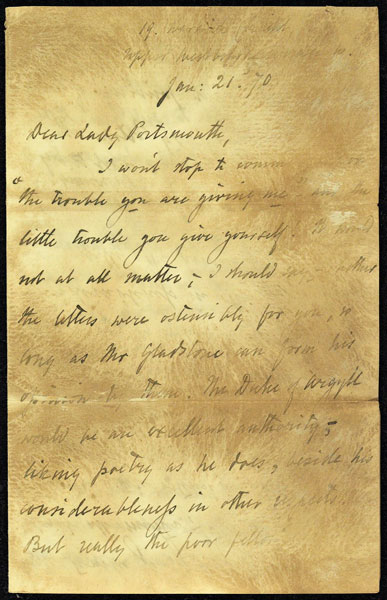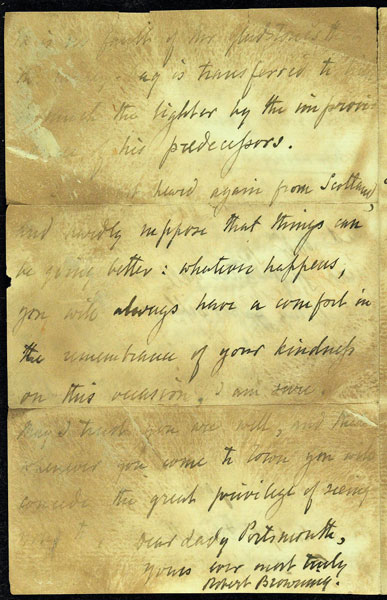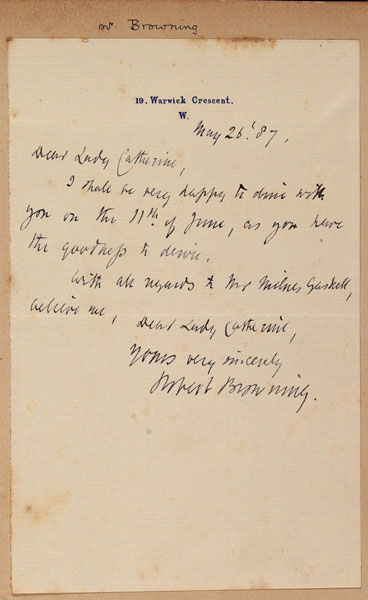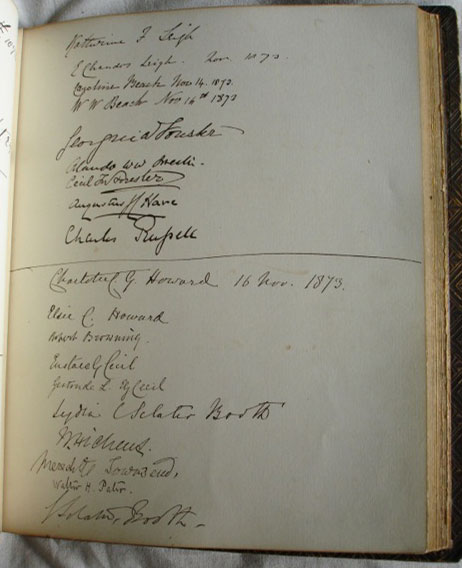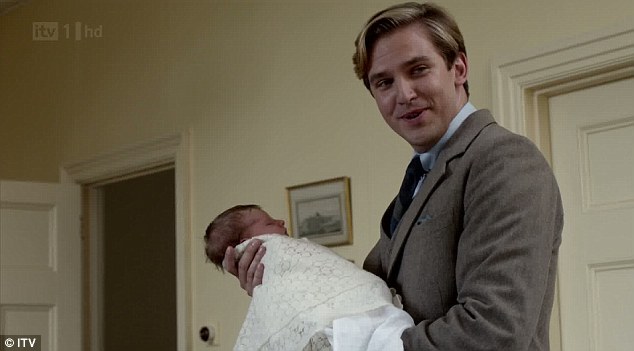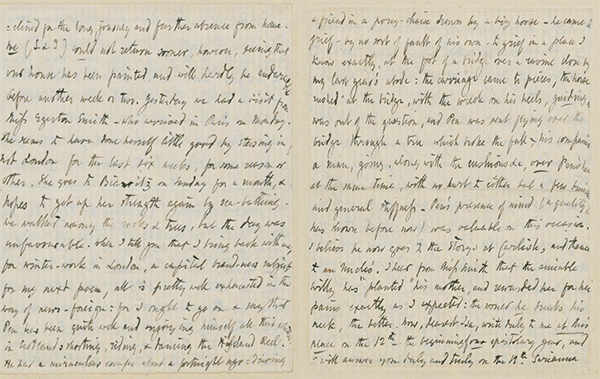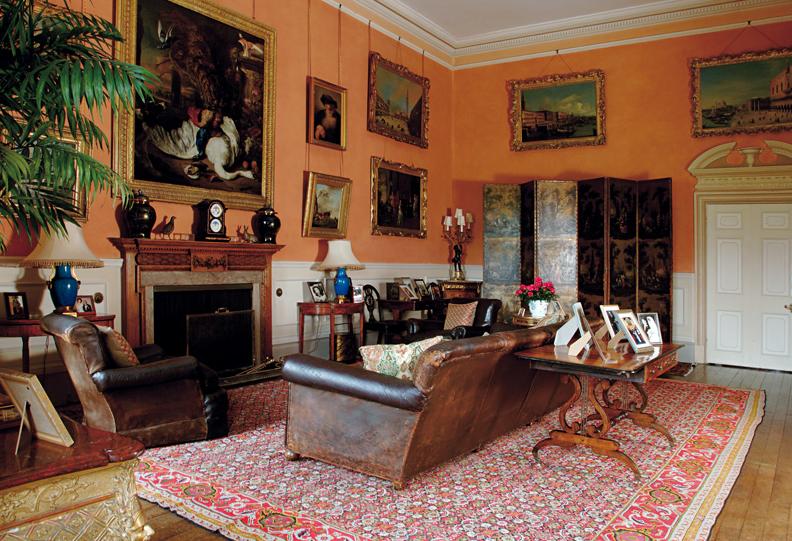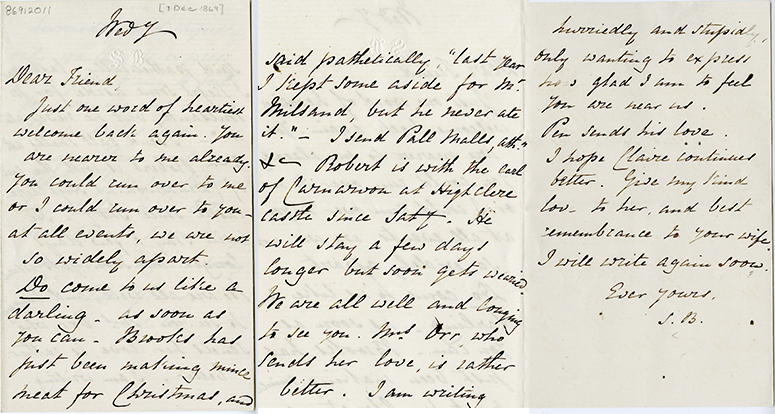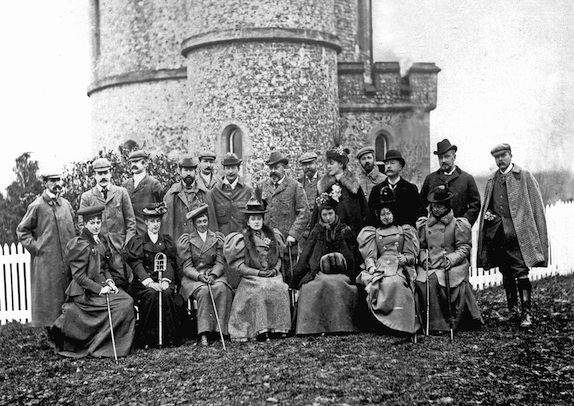 Continuing to tease out a bond between the historical milieu of Highclere Castle, which is the setting for the PBS drama Downton Abbey, and the real world of Robert Browning, I have found a literary and an historical allusion in Season 4 of Downton Abbey that may provide a tenuous connection to Robert Browning.
Continuing to tease out a bond between the historical milieu of Highclere Castle, which is the setting for the PBS drama Downton Abbey, and the real world of Robert Browning, I have found a literary and an historical allusion in Season 4 of Downton Abbey that may provide a tenuous connection to Robert Browning.
Trying to draw Isobel Crawley, mother of recently deceased Matthew Crawley, out of her mourning, Violet, Dowager Countess of Grantham, quotes the last two lines of Christina Rossetti’s poem, “Remember:”
Christina Rossetti. “Remember”
from Goblin Market and Other Poems.
Cambridge, London: Macmillan and Co., 1862, p. 58
Isobel reminds Dame Crawley that in the poem Christina Rossetti is talking about her own death, not the death of her child.
Robert Browning corresponded with Christina Rossetti. In fact, the Armstrong Browning Library owns a letter written by Christina Rossetti to Robert Browning, dated 21 December 1869, in which she extends an invitation to attend a gathering at her home. “Remember” was published in Goblin Market and Other Poems, which was part of Robert Browning’s library. The frontispiece and vignette title page were illustrated by Christina’s brother, Dante Gabriel Rossetti, who also corresponded with the Brownings. The ABL’s advance copy of this work was sent to Robert Browning by the Rossetti family and remained in his library until his death.
Christina Rossetti. Goblin Market and Other Poems.
Cambridge, London: Macmillan and Co., 1862.
Also in Episode 1, a famous Australian opera singer, Dame Nellie Melba, sings “Songs My Mother Taught Me,” a song for voice and piano written in 1880 by Antonín Dvořák. It is the fourth of seven songs from his cycle Gypsy Songs. The English lyrics for the song are:
Songs my mother taught me, In the days long vanished;
Seldom from her eyelids were the teardrops banished.
Now I teach my children, each melodious measure.
Oft the tears are flowing, oft they flow from my memory’s treasure.
Antonín Dvořák, “Songs My Mother Taught Me,” (No. 4 in: Zigeunermelodien, Op. 55),German words, Adolph Heyduk; English words, Mrs. Natalia Macfarren, Berlin: N. Simrock [1880].
Robert Browning and Antonín Dvořák were contemporaries. According to Musical World, 28 February 1885, the song, which was very popular at the time, was to be performed at St. James Hall that very afternoon. Antonín Dvořák visited England nine times in all, but I have yet to find evidence that their paths crossed.
Dame Nellie Melba, the character portrayed by Dame Kiri Te Kanawa, is the first historical character to be featured on Downton Abbey. In the episode, she sang Dvorak’s “Songs My Mother Taught Me” and a selection from Puccini. Dame Nellie was a famous performer during Browning’s lifetime. In fact, Melba toast and peach Melba were created in her name by famed chef Auguste Escoffier. Her debut in London at Covent Garden was in May 1888, the year before Browning’s death. She was twenty-seven years old.
Dame Nellie Melba as “Ophelie,” circa 1889.
Courtesy of the National Archives of Australia
Notes and Queries: Thus far I have not been able to directly connect Robert Browning to either Dvorak or Dame Nellie. Does anyone know of a connection?




